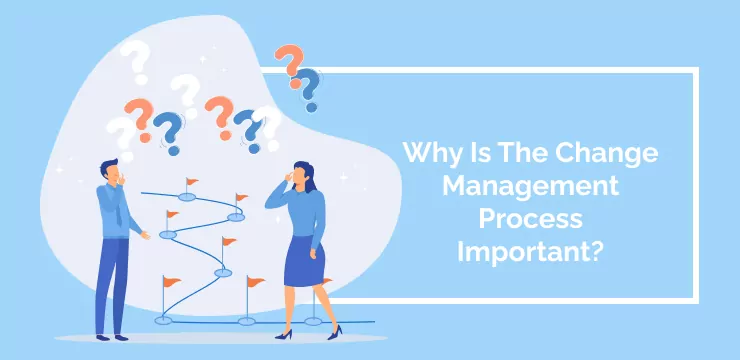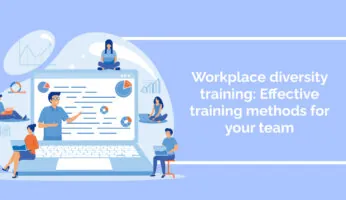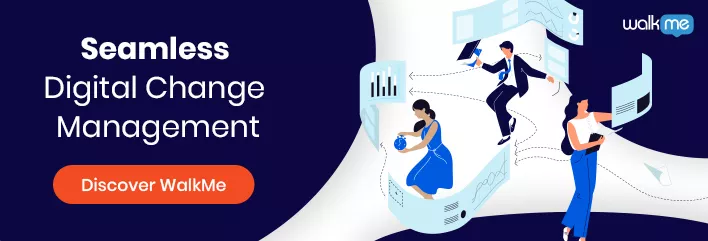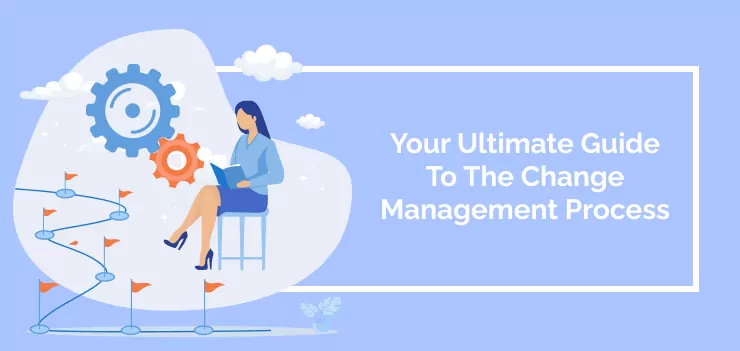
Organizations come in all shapes and sizes. So surely, education, retail, financial, industrial, and creative are all completely different, right? Well, not when it comes to change management processes, as various types of staff usually react similarly to significant changes to company culture and new technologies.
But despite constant changes being standard in today’s market environment, Gartner shows that willingness to support organizational change reduced from 74% of employees in 2016 to just 43% in 2022, leading to further change fatigue. This statistic underpins the importance of using a change management process flow.
The flow helps to ensure you provide crucial support for your team to optimize employee experience, help your staff embrace change as a constant in their daily routine, and ensure organizational success.
This article will look at the change management process flow and why it is important, with examples from different industries. We will then show you how to follow a process flow so you can discover that all sectors follow the same flow to help ensure your success.
What Is The Change Management Process?
The change management process flow is the eight steps that allow you to ensure you complete every step needed to complete a successful change management process. The process flow comes in two phases: Phase One involves proposing your change management strategy, and Phase Two is where you implement the changes.
Next, let’s look at why this process flow is essential.
Why Is The Change Management Process Important?
A consistent change management process flow is helpful because it supports change leaders in managing the complexities of change and supporting staff to emerge successfully from a new culture. The flow also promotes improved processes and business outcomes that can lead to higher revenue. Without the change management process flow, change leaders may overlook certain parts of the change process, leading to failure to implement change successfully.
Change management is a huge challenge for many complex reasons.
Because of these challenges and this complexity, it is useful to see what change looks like in different sectors.
What does change look like in different sectors?
Although change is the same for different industries, it is helpful to look at examples of change management for various sectors to see that you can apply the same models effectively, whatever your sector.
Change management process flow — Education
This example of the change management process flow is for an educational organization.
This framework outlines industry-specific considerations at each step of the process. However, this change management process flow also easily aligns with Lewin’s change management model.
Any change initiative could follow Lewin’s three-stage flow, and it can be helpful as the basis of your transformation initiative, whatever your sector.
The three principles of Lewin’s model are unfreeze, change, and refreeze.
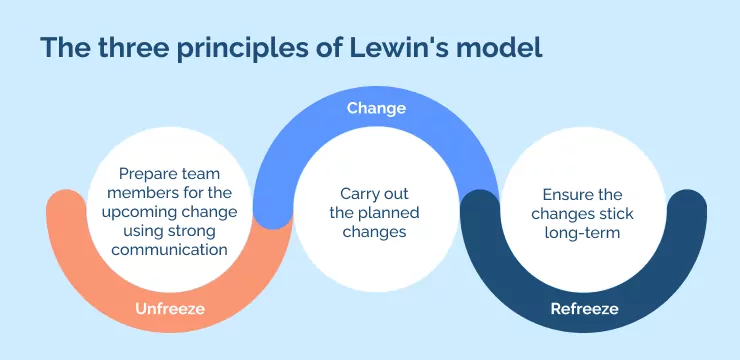
Unfreeze Before you start, take a look at what is happening now. Doing so will help you understand what needs to change for your desired results. You should also let everyone who is affected know what to expect.
Change This is the time to start carrying out the change. Start using the change in everyday processes, communicate it at every opportunity, and support anyone who needs help understanding it.
Refreeze After you have made a change, make sure it is working. Make a plan to check in on the change to see if it’s helping you reach your goals.
Change management process flow — Retail
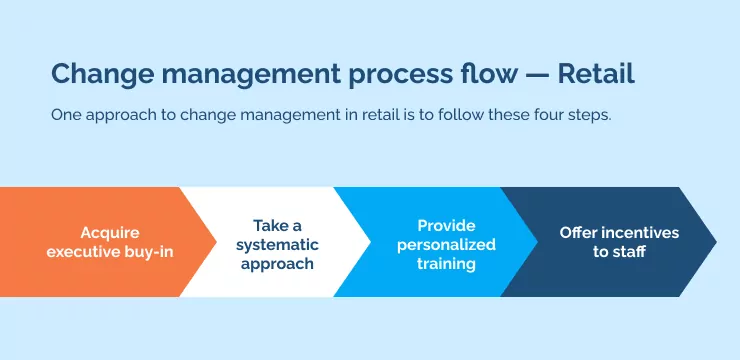
Approach the change management process flow in retail as an organizational or cultural change, not a digital change. Doing so will help you focus on your key resource: staff.
One approach to change management in retail is to follow these four steps.
- Acquire executive buy-in.
- Take a systematic approach.
- Provide personalized training.
- Offer incentives to staff.
Change managers and retail executives need to consider these four points, but that doesn’t mean you can’t use a generic template for your retail change strategies, such as the diagram below of Kotter’s eight steps to change model.
You can apply these eight stages to retail organizations, financial institutions, not-for-profits, or the hospitality sector. All these change models focus on reducing employee resistance to change, which you will find helpful in any industry.
Change management process flow — Hospitality
The vision for change is fundamental to the success of every stage in the hospitality change management flow — and all the other flows we’ve viewed.
Hospitality managers spearheading transitions must be clear on the desired outcome and their benefits. Otherwise, you won’t win the buy-in of your stakeholders.
One way to clarify the vision is to utilize Bridge’s 4 Ps of change.
Asking yourself these questions and recording the answers makes you feel confident and prepared for the upcoming changes.
The hospitality sector often uses these four Ps, which you can apply to any industry.
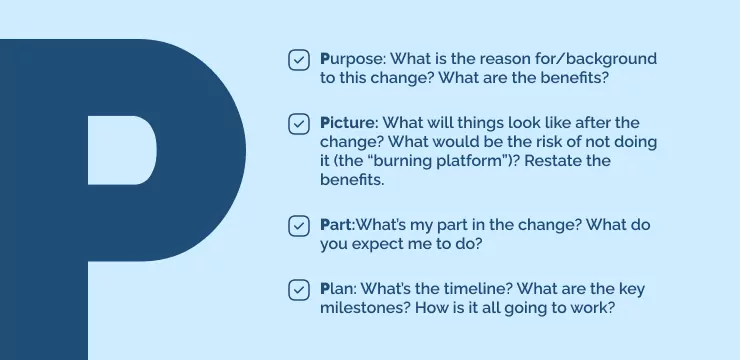
Now we have looked at examples of how you can use change management models in various industries, let’s look at how to follow a change management process flow.
How To Follow A Change Management Process Flow
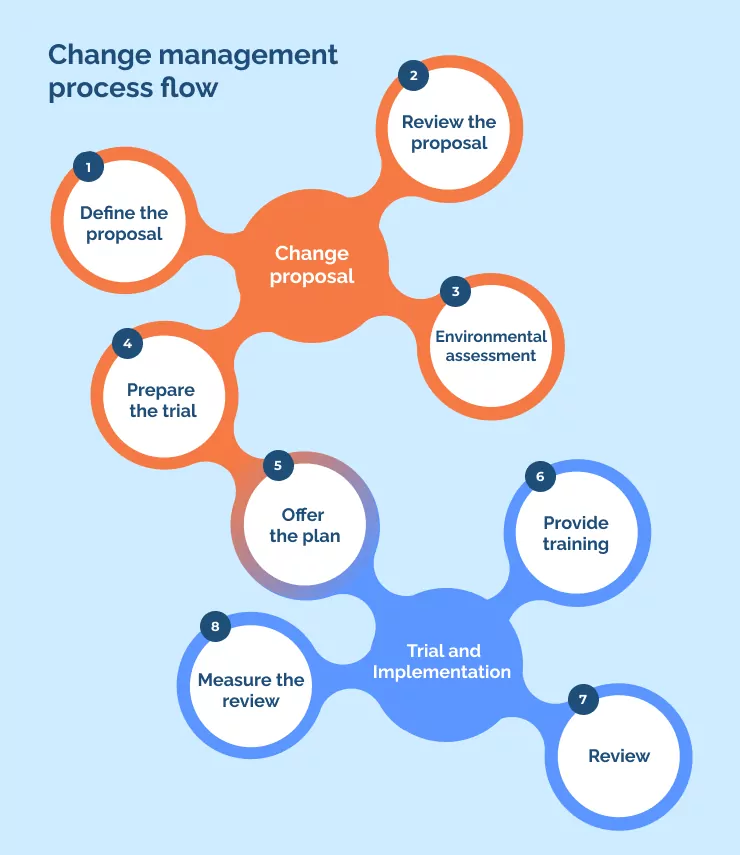
While change management models are one tool in supporting your employees to implement change effectively, it is helpful to follow an overall change management process flow to ensure you do everything you can to ensure success. Phase 1 of this process begins with proposing your change management strategy.
PHASE 1: Change Proposal
The first part of change management is the change proposal you communicate to your team.
Propose Your Change Management Strategy
The first part of your change management strategy is to propose it to the team. Ensure you communicate the reasons for change and emphasize how the changes will benefit employees, streamline their workflows, and allow them to focus on higher-level tasks. This step is crucial, as communication is the key to change management.
Also, inform the team that the company will offer them training at every level throughout the process of changes to ensure early buy-in.
Identify Your Change Management Models
Next, identify the change management models that best suit your company culture and the changes you plan to implement. Examples of some of the most popular change models to choose from are:
- Bridge’s four Ps of change
- Lewin’s change model
- Kotter’s eight-step model
When choosing your change model, or what combination of more than one you will use, consider how the change model accommodates staff support as a priority.
Next, move on to phase two: trialing and implementing change.
PHASE 2: Trial And Implement Change
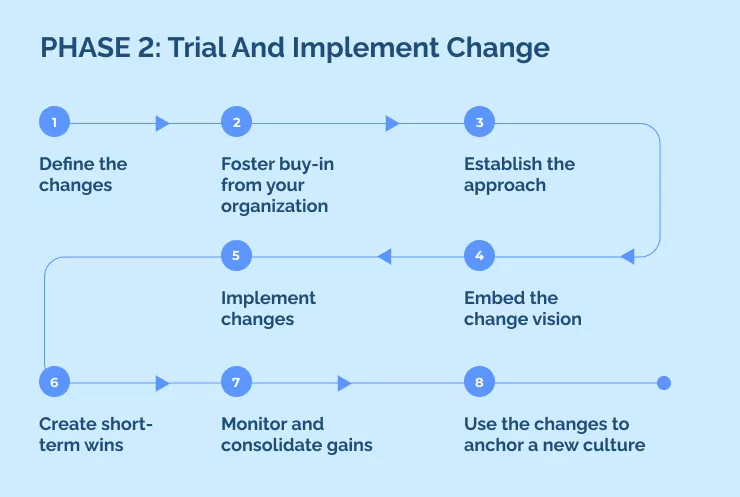
The next part of the effective change management process is to trial and implement change, which involves eight steps:
- Define the changes.
- Foster buy-in from your organization.
- Establish the approach.
- Embed the change vision.
- Implement changes.
- Create short-term wins.
- Monitor and consolidate gains.
- Use the changes to anchor a new culture.
The first of these for phase two is to define the changes you will make.
STEP 1: Define The Changes
Once you have chosen your model, define your change management strategy. Include your company goals and what problems you need to solve with the change management process.
STEP 2: Foster Buy-In From Your Organization
-Communicate the changes in a way that makes the incentives for staff clear as they prepare to navigate the challenging digital learning curve they will soon encounter.
-Have a point of contact for questions and ensure this individual is trained and prepared for the questions their colleagues will ask.
-Make it clear that you will be open to feedback and act on it throughout the change process.
STEP 3: ESTABLISH THE APPROACH – create the vision and strategy
Use your work on the 4 Ps of change (purpose, picture, part, plan) to establish the approach you will use to create the vision and strategy for your change management.
STEP 4: Embed the change vision
A team of volunteer change management individuals can help you embed the change vision in groups of stakeholders to help them understand and cement their motivation for the upcoming changes.
STEP 5: IMPLEMENT – empower or enable action
Plan for every changing aspect, including communications, training, and review.
Ensure your organization is ready for change by removing barriers, such as conflicting behaviors, procedures, and legacy technologies.
STEP 6: Create short-term wins
Remember to celebrate success to maintain high motivation from your employees, helping them feel they are always moving toward the end goal.
STEP 7: MONITOR – consolidate gains
Measure, monitor, and evaluate, as metrics and key performance indicators (KPIs) are keys to achieving an effective change management process.
Monitoring and evaluation will enable you to anchor new positive behaviors into the culture, and you’ll be able to catch old habits before they threaten the entire change process.
STEP 8: Use your changes to anchor your new culture
Don’t rush into this step, as it takes time to form new habits. The new behaviors become ingrained in the new status quo only when the old habits seem out of place.
Employee Support Is The Key To The Effective Change Management Process
Change management may be a transformational process but also a human journey. Supporting those involved is essential to any significant enterprise change management success, and you must include this support in your process flow. Doing so builds trust for the future and sets a culture of ownership over the transition process for each individual. The earlier you place employee support as part of your change management process flow, the more likely you will be to manage change smoothly. This guide reminds you that participation, communication, and trust are vital when leading your business through organizational changes. Don’t forget to place employee support at the center of your change management process flow to ensure your success.
Tristan Ovington
Tristan Ovington is a professional senior writer and journalist, specializing in providing expert insights on various topics such as digital adoption, digital transformation, change management, and Cloud apps. He delivers his knowledge through accessible online content that is data-driven and presented in a friendly tone, making it easy for readers to understand and implement.

